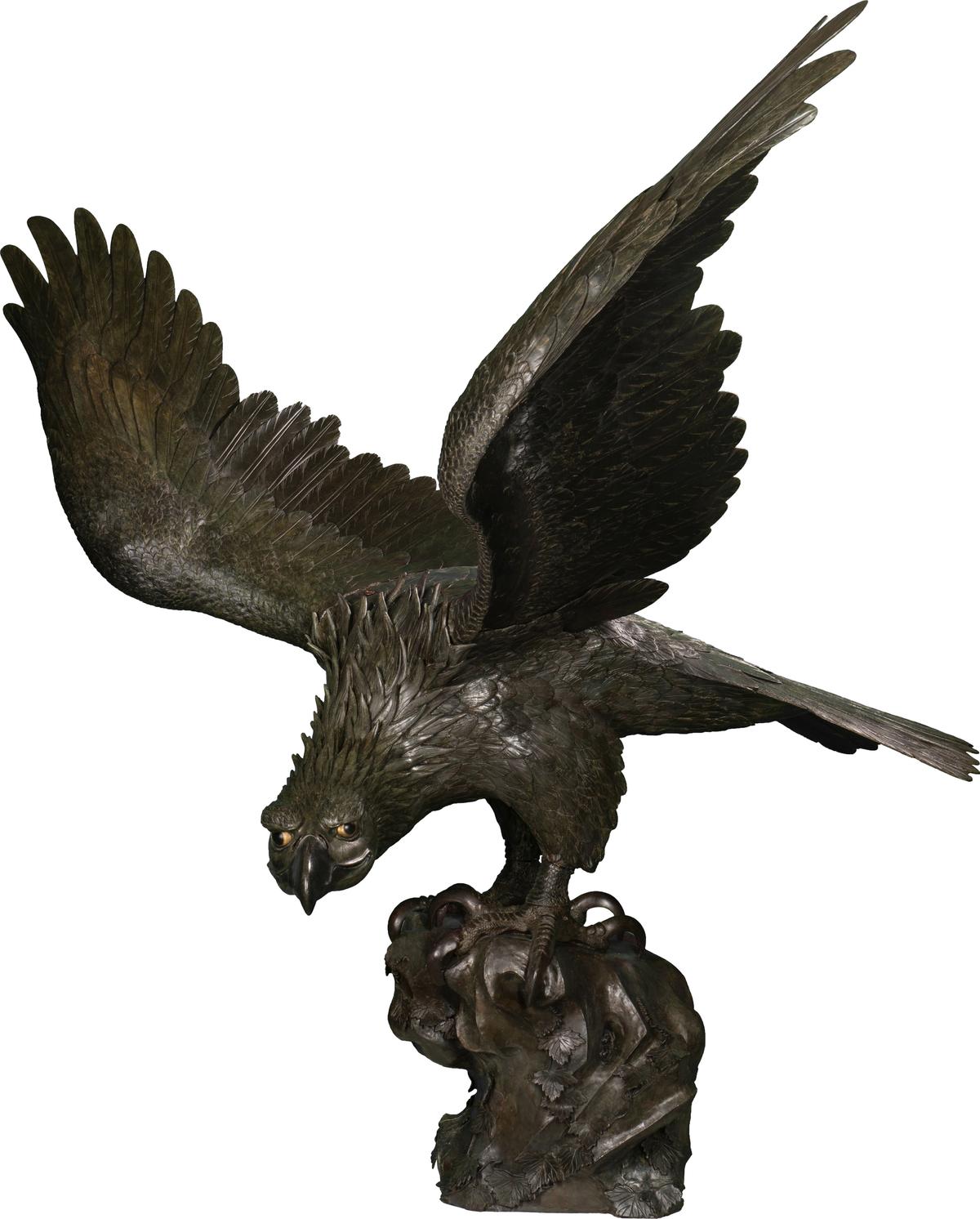For decades, a monumental bronze eagle donated to Boston College braved the New England weather atop a column on the campus, gradually losing its sheen as it was damaged by the elements. Finally, officials decided to make a replica and left the original in storage in a plaster cast studio in 1993.
Local conservators have now determined that the original bird is a masterpiece from Japan’s Meiji era (1868-1912), and it is proudly displayed in the exhibition Eaglemania: Collecting Japanese Art in Gilded Age America, running until 2 June at the college’s McMullen Museum of Art.
The monumental bronze eagle was donated to Boston College in 1954 by a gardener who inherited it from the diplomat and collector Larz Anderson, who bought it in Japan while on his honeymoon in 1897, says Nancy Netzer, the director of the McMullen. When it was replaced in 1993, the original was disassembled and stored in five boxes.
In 2015, an artist who tracked down the original eagle alerted Boston College that it probably had artistic significance. The university called in the local firm Rika Smith McNally & Associates to conserve the work.
A Meiji attribution was confirmed by an analysis by the Museum of Fine Arts, Boston. The high lead content corresponded with karakane alloys used by Meiji artists to achieve a hallmark fluidity in wavy parallel lines, which are “incredible” around the beak and eyes, says Rika Smith McNally.
“When we got to the pupil, we knew we were dealing with a Japanese Meiji work because the eyeball was made using the shakudo technique,” in which a raised black copper pupil is attached to the centre of a gold-leafed eye, she adds. “It gives a very animated appearance to the eye.”


